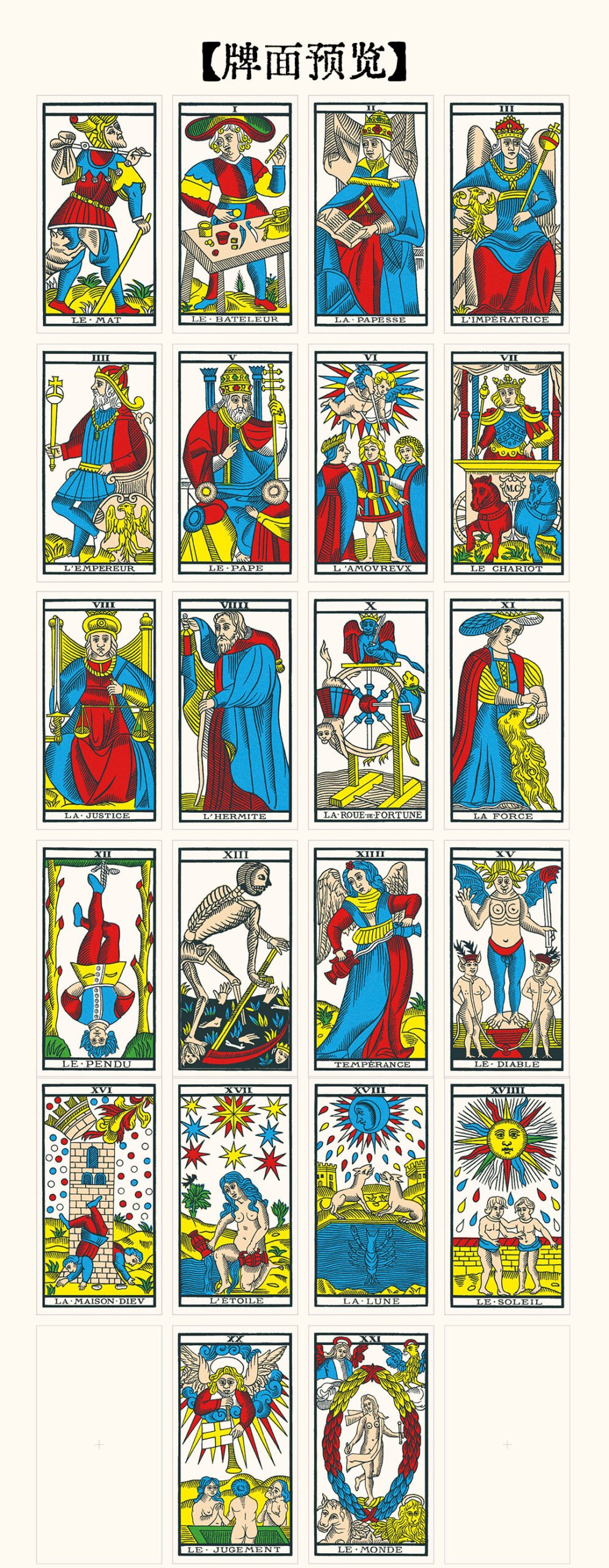78 Cards Tarot Deck +2 gift cards
Card size: 12cm x 6.3cm (original size)
Made by 330g high quality casino paper with excellent toughness
Ships worldwide
Limited to 500 worldwide
Other names: Tarot de Marseille – type 2, Tarot of Marseille
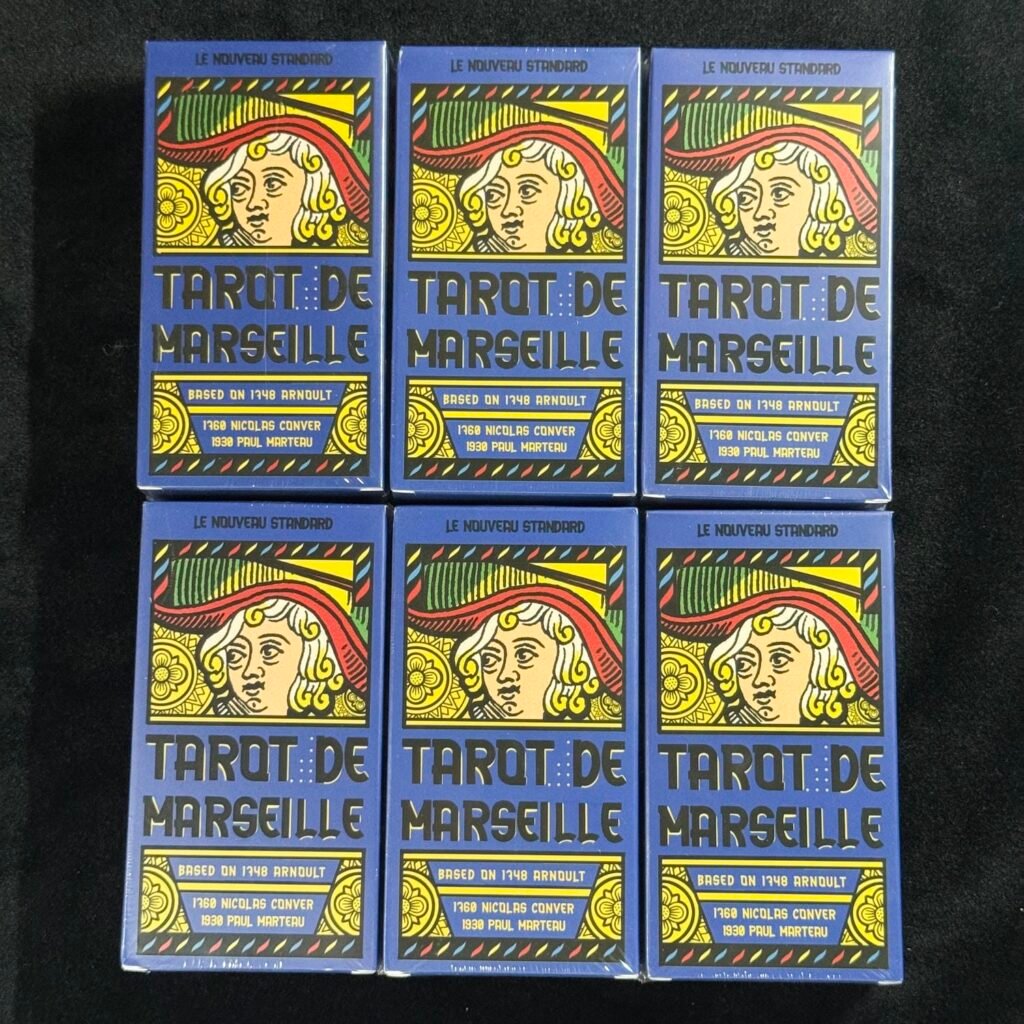
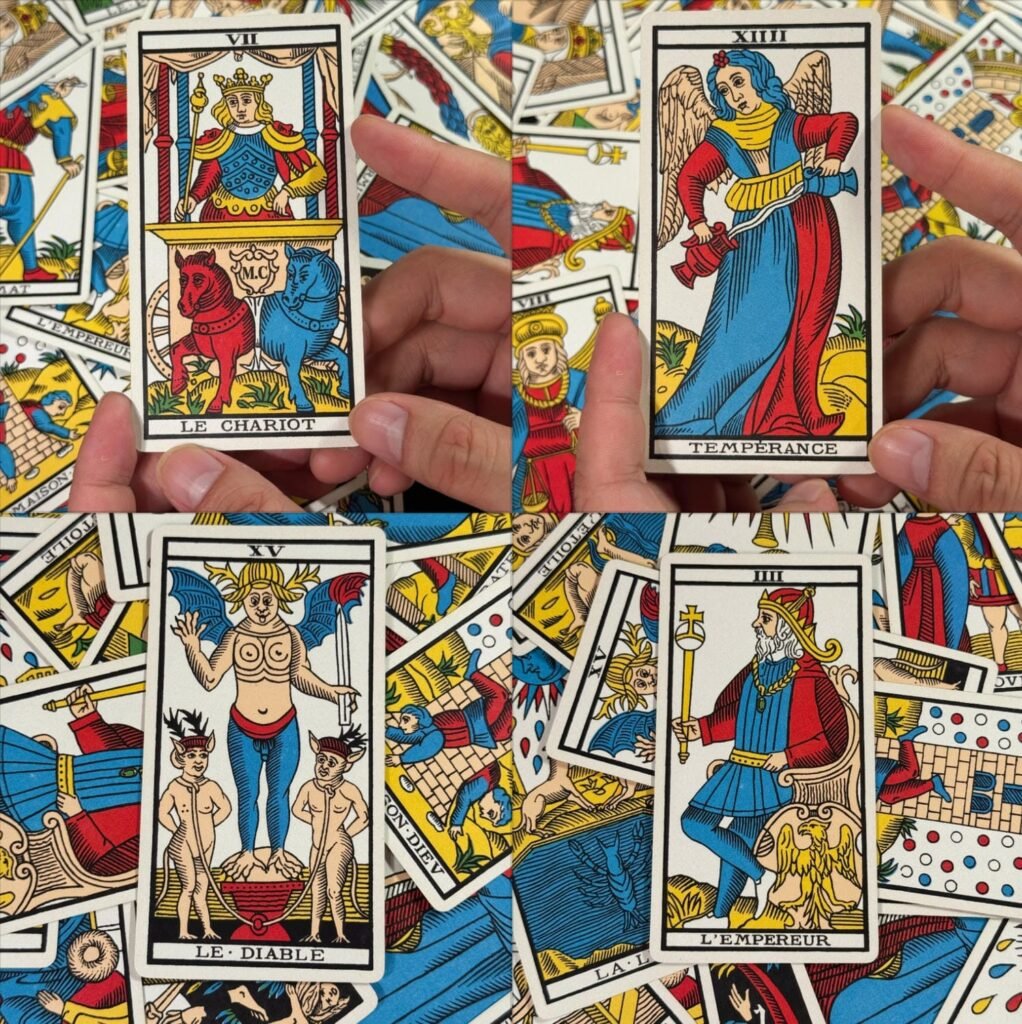
According to the academic consensus, tarot cards were invented in northern Italy at the beginning of the 15th century and were introduced to southern France in 1499 when the French conquered Milan and Piemonte, which is the predecessor of Tarot de Marseille.
Since then, It have been produced in Paris, Lyon, Avignon, and Marseille, with a high degree of similarity in images and production patterns, and have become the most popular card game in Europe at the time, second in popularity only to French Solitaire, and often used by people of a higher class. The earliest surviving Tarot de Marseille was made in Lyon in 1639.
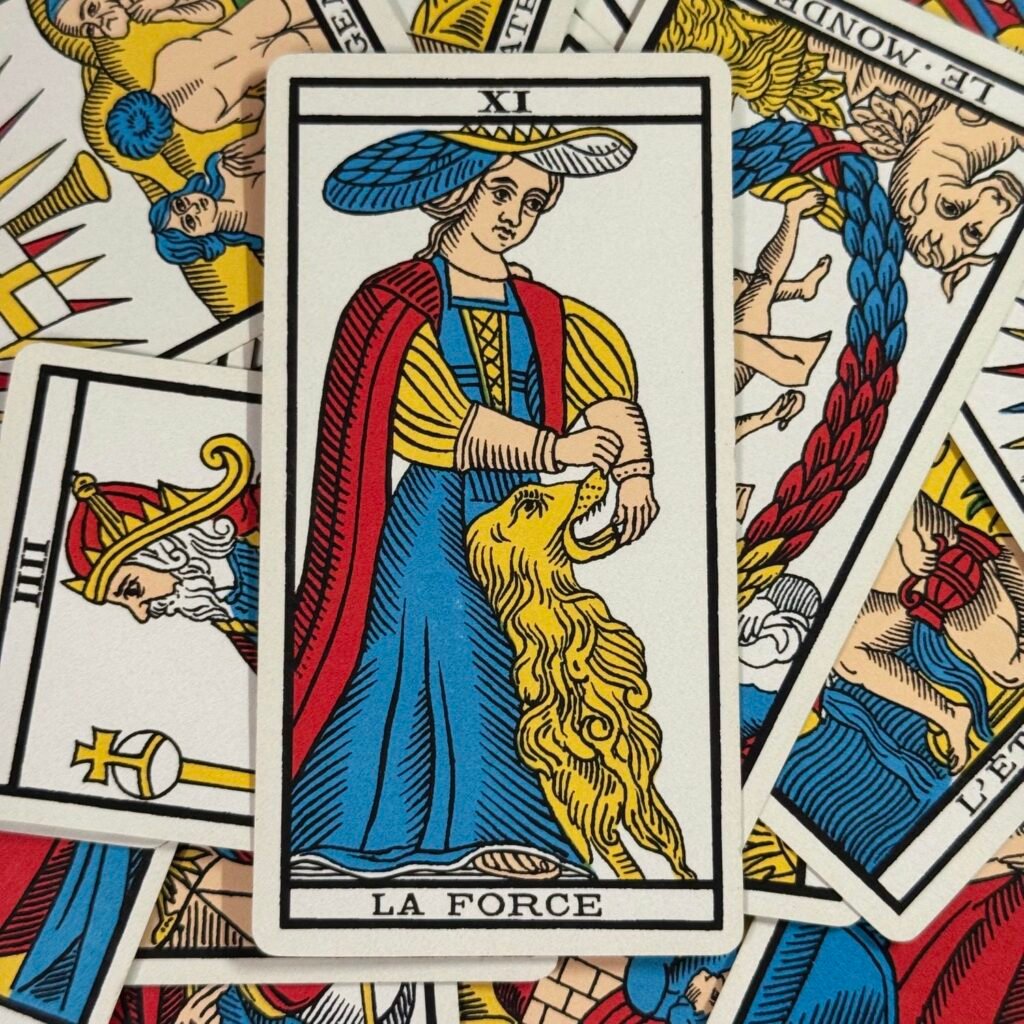
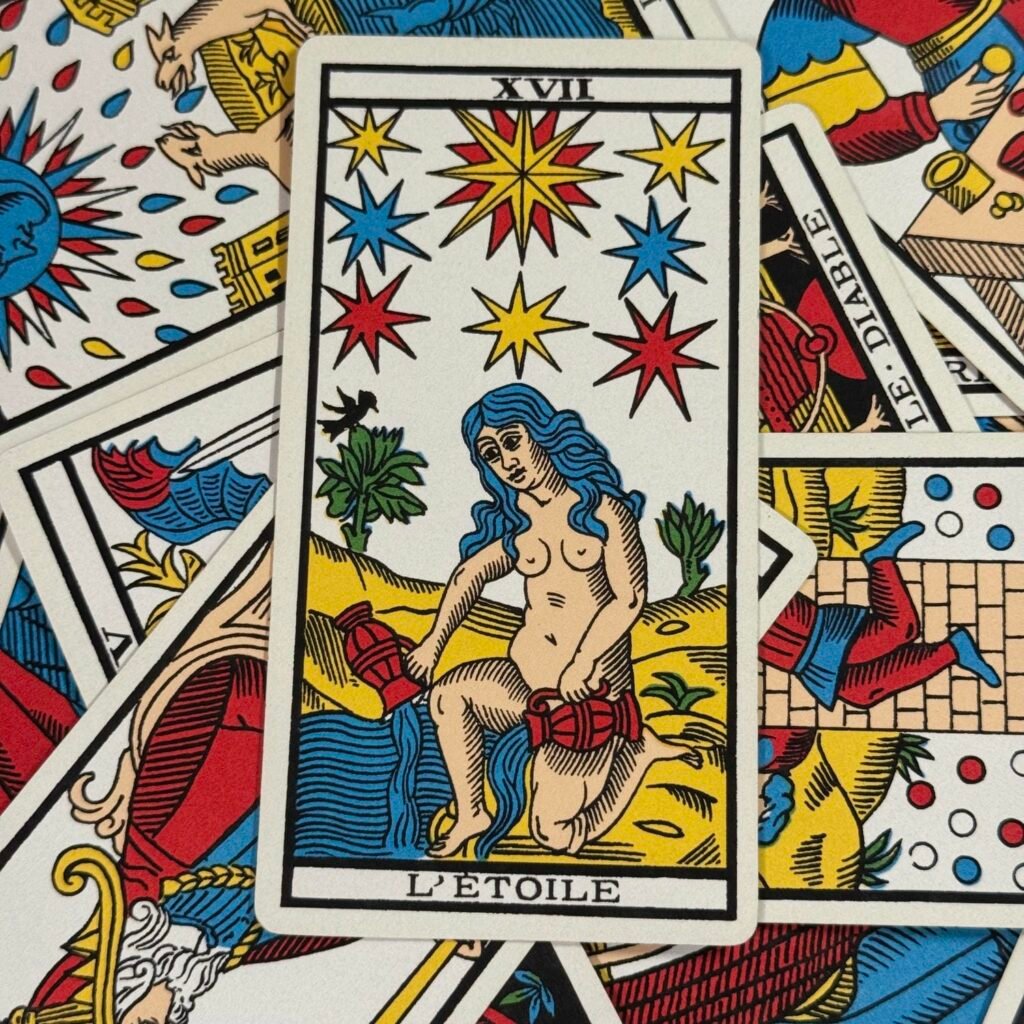
Tarot de Marseille was gradually abandoned as a game from the 18th century onwards, but attracted the attention of occultists, starting the legend of the occult uses of the Tarot. Its 78-card structure became the standard for almost all occult tarot decks of the 19th century and beyond.
It is important to note that the name Tarot de Marseille is not very old and does not represent its actual origin. It was first mentioned by the French card historian Romain Merlin in 1856 and popularised by French occultists such as Levi, Pappus and Paul Marteau.
As the source of all 78 system tarot cards, the Tarot de Marseille has not received the attention it deserves for a long time. On the one hand, it is due to the fact that it is too old, and the pip cards are obscure and difficult to understand, causing difficulties in interpretation; on the other hand, the TDM that are currently available on the market and can be conveniently purchased by everyone, have more or less imperfections.
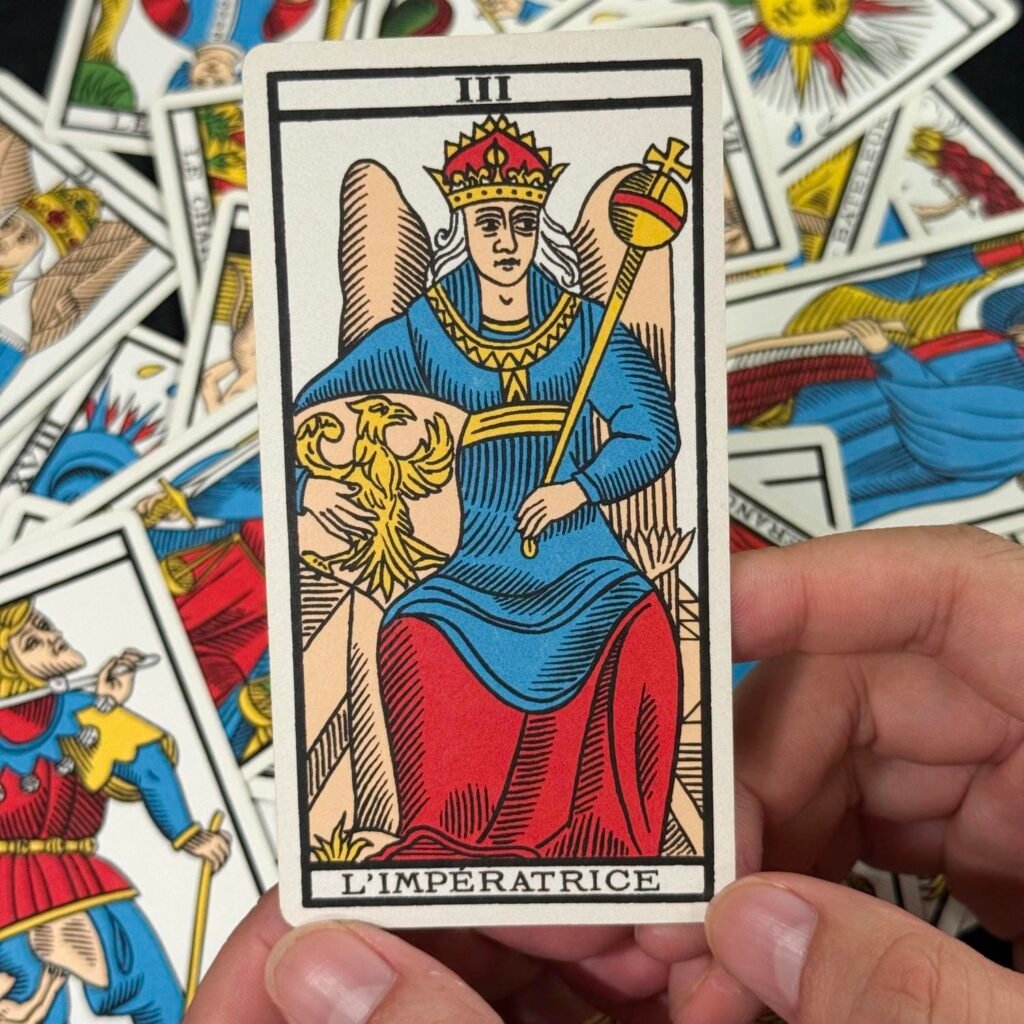
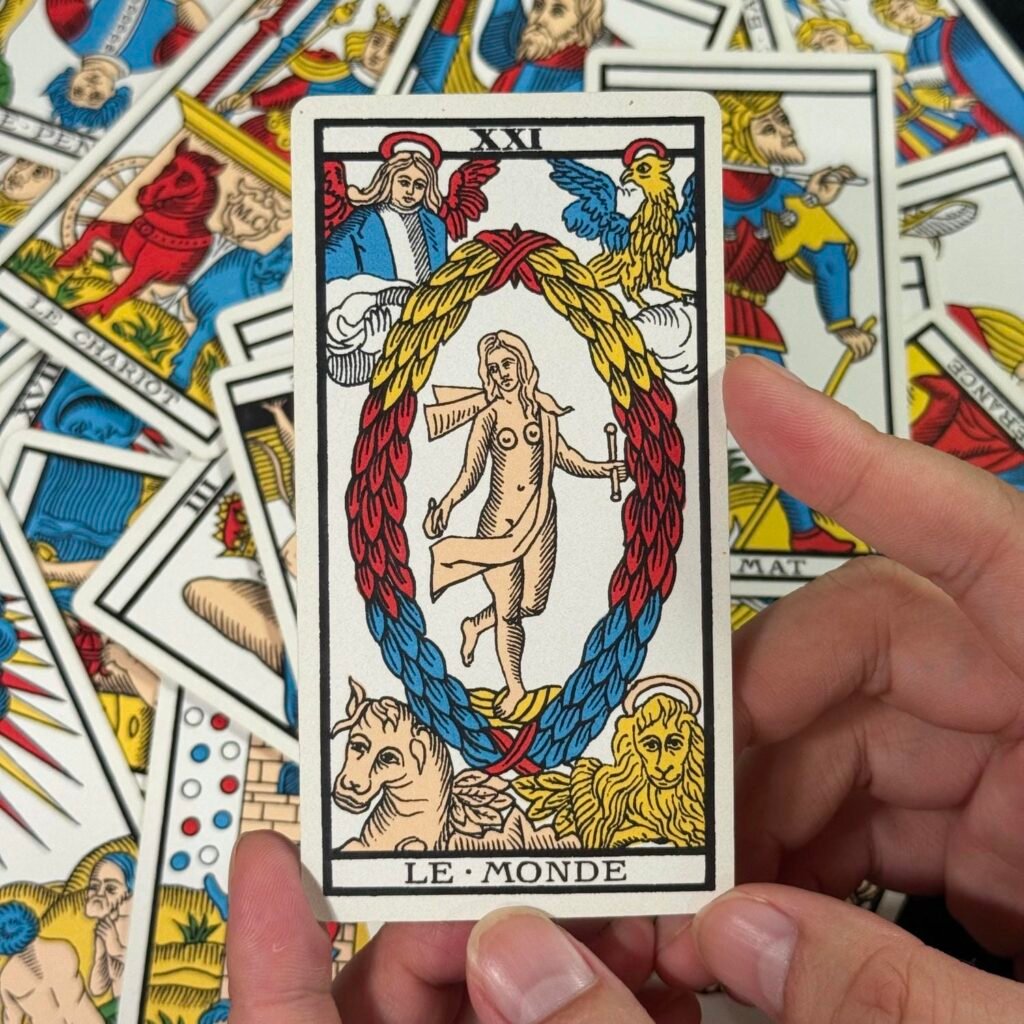
Therefore, the revision of a TDM deck with classic images, strict evidence, rigorous colours, precise composition, and every detail in line with the historical tradition is particularly necessary for its inheritance and development.
the scope of Tarot de Marseille is actually very narrow, confined to a limited number of cities in France, with dozens of authors producing tarot cards in the same style.Among them, the two systems of 1748 ARNOULT and 1760 CONVER, as well as the 1930 GRIMAUD, which combines the characteristics of the two, have the largest production, the longest use, the largest number of users and the largest number of survivors, which together constitute the ‘prototype’ of the Tarot de Marseille that is in use today.
This restoration according to 1748, 1760 two classic version of the fusion of restoration, at the same time in the colour scheme reference to 1930, and strive to approach and restore the standard form, restore the strictest sense of the Tarot de Marseille.
The origins of the legacy are as follows: (This thanks to the https://traditionaltarot.wordpress.com/ for contribution, without which the detailed information on this deck would not be available!)
In 1760, Nicolas Conver, a French Marseille card maker, engraved the original template, an important model for Marseille tarot decks of the same period. Conver’s card factory and its molds were sold to the local Camoin family in the late 18th century, and 1760 was able to continue to produce, and they were still printing this tarot deck in the second half of the 19th century, although the later editions show signs of damage.
In 1851 Batiste-Paul Grimaud, an employee of the railroad company, acquired the patent for “opaque cards” of the Parisian chemist Henri-Eumènes Roche and founded the Grimaud Card Company, which in 1858 acquired the patent for “metal rounded corners for cards” of Firmin Chappelier. In 1858, Grimaud acquired Firmin Chappelier’s patent for the “metal rounded corners of cards”, which made him rich overnight.
In 1885, Grimaud bought 65% of the shares of its main competitor, the Camoin card factory, and in 1888, the two companies merged, with Grimaud acquiring Conver’s card factory, molds, and other assets.
In 1891, Grimaud bought the Paris card manufacturing company, Lequart, and acquired the rights to produce the 1748 Marseille, which is so similar to the 1760 Conver that it was probably a second creation, and the 1748 figure may have been based on commercial competition.
Baptiste-Paul Grimaud died in 1899 at the age of 82. His nephews, Léo Marteau and Georges Marteau, took over the company and Georges Marteau died in 1916, donating his collection of fine antique cards to the Bibliothèque Nationale de France.
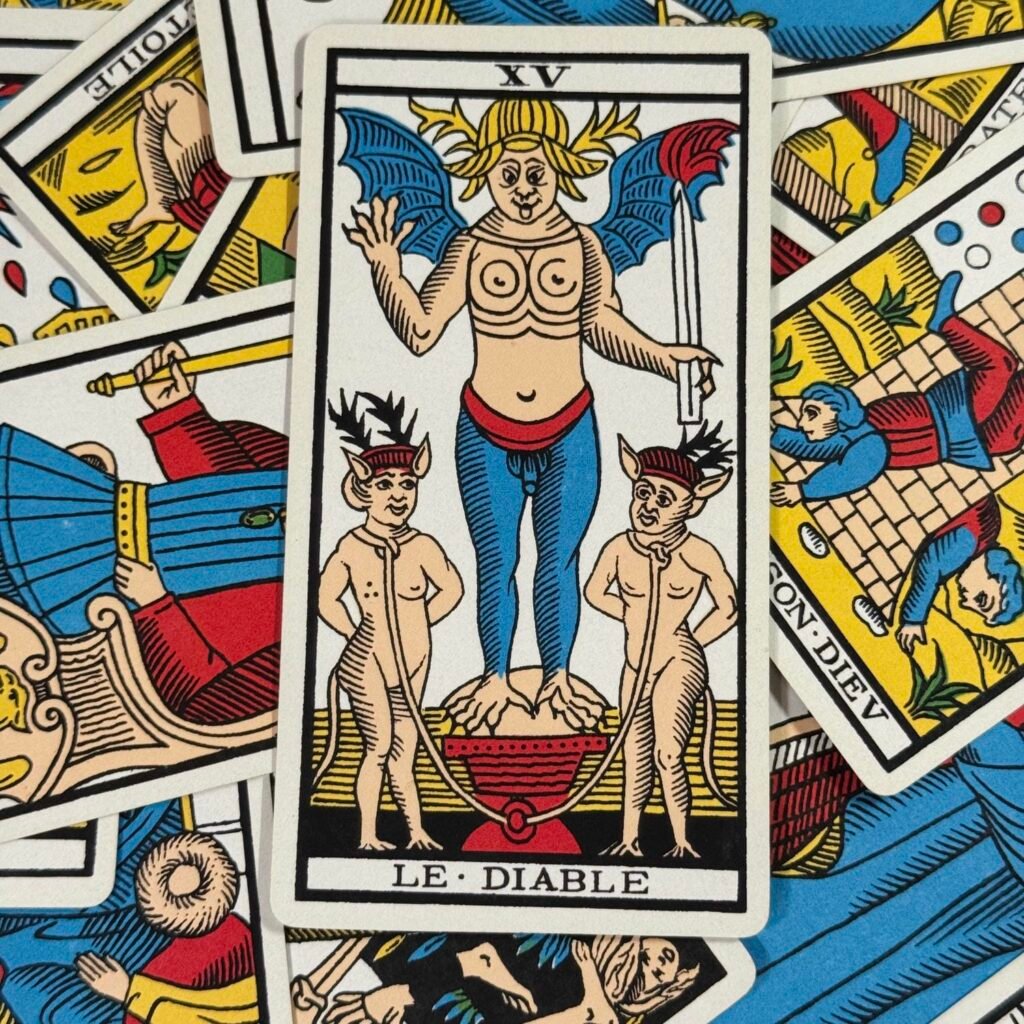
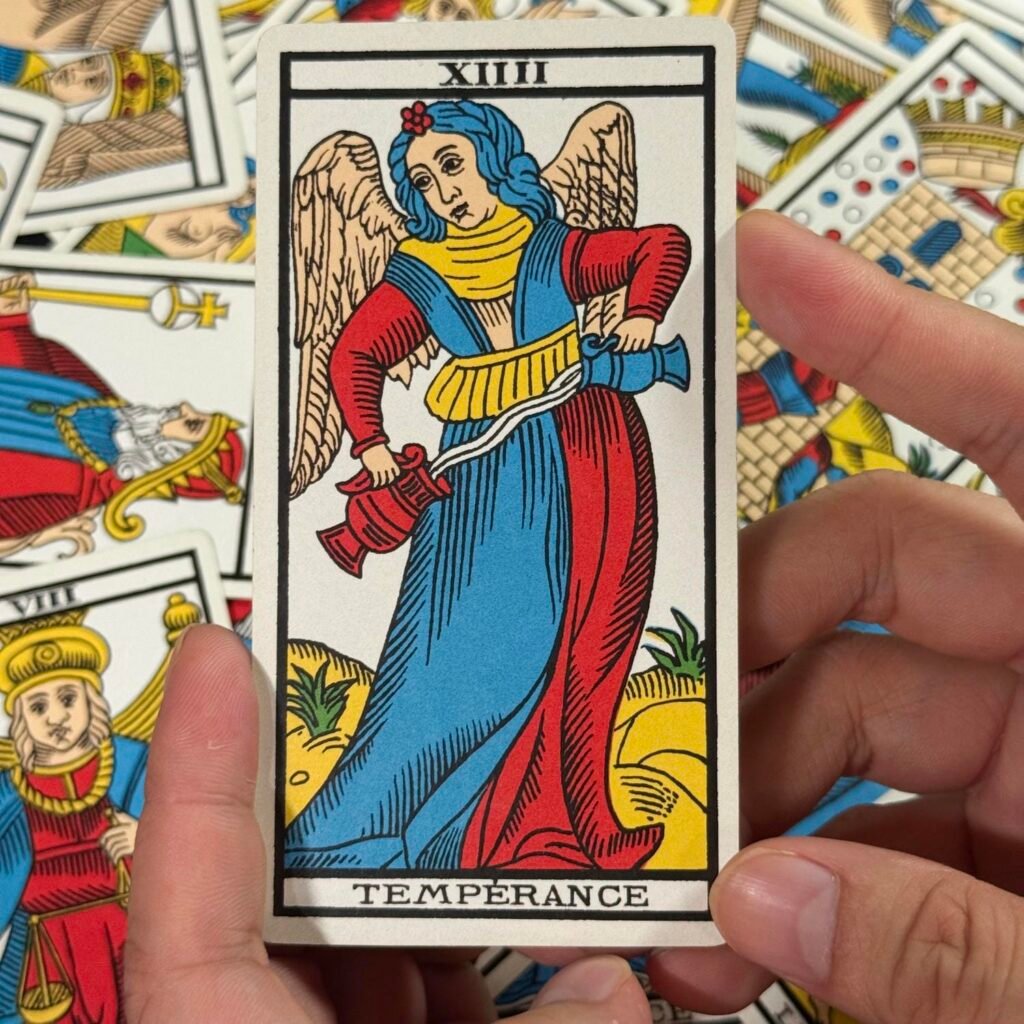
In 1930, Paul Marteau, grandnephew of Batiste-Paul Grimaud, son of Léo Marteau, heir to the Grimaud company, and author of this book, published the celebrated 1930 Grimaud Marseille, based on the 1748 Lequart, with the color scheme of a later version of the 1760 Conver manufactured by Camoin.
In 1948, after 20 years of work, Paul Marteau completed his book “Le Tarot de Marseilles”, which explains the various details of his deck.
In 1949, Paul Marteau took some of the details of the 1760 Conver and transposed them to the 1930 version, including the misaligned pattern of the 9 of coins, etc., and published a second edition, which has not been updated since. in 1966, Paul Marteau donated the last portion of his family’s collection of vintage decks to the BnF.
SO, Along the lines of Paul Marteau’s 1949 improvements, I have upgraded hundreds of details in conjunction with several 1760 Conver versions found in recent years. In a sense, the NSTDM can be described as a comprehensively perfected version of the 1930 Grimaud.
Firstly, the original lines are completely preserved. Currently on the market, the more common version, are drawn with drawing software, are not the traditional style. This version uses 1930 lines will be the base, restore the original flavour of Tarot de Marseille.
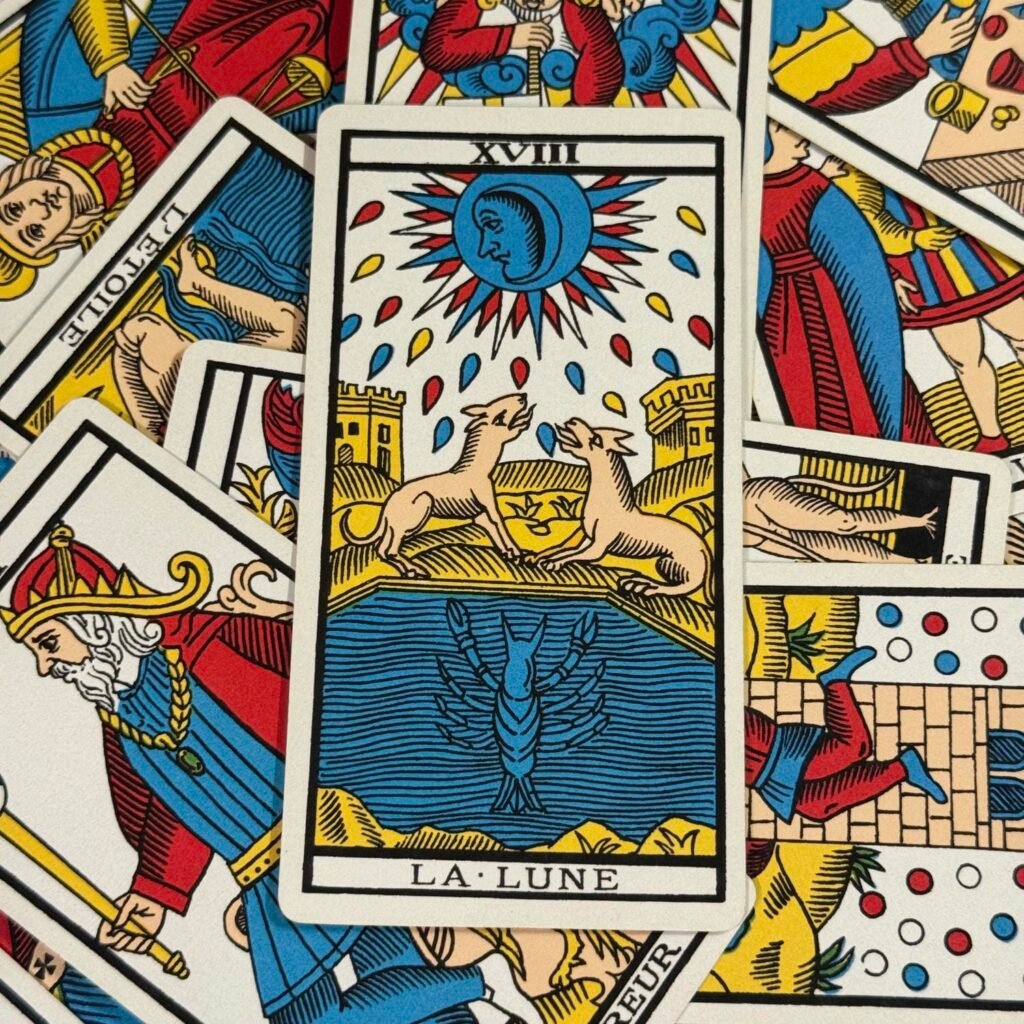
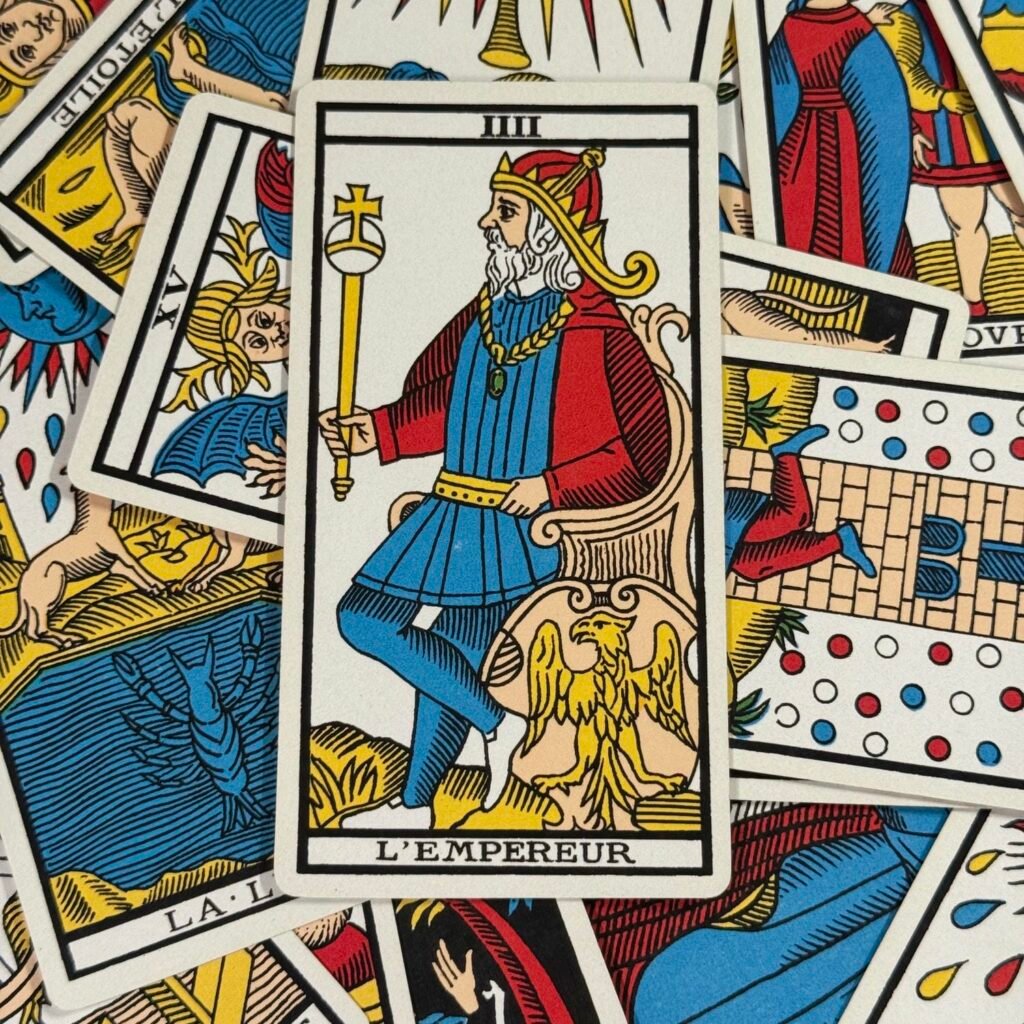
Second, do not add excessive details on the basis of maintaining the richness. The traditional image of Marseille Tarot is very simple and smooth. Some other version often add details from different versions of Marseille, resulting in over-inflated details, losing the original charm of Marseille. This edition restricts the images to the three versions of 1760, 1748 and 1930, and each detail has been rigorously compared and examined to ensure that there are no fabricated details and that the whole is clearer and smoother.
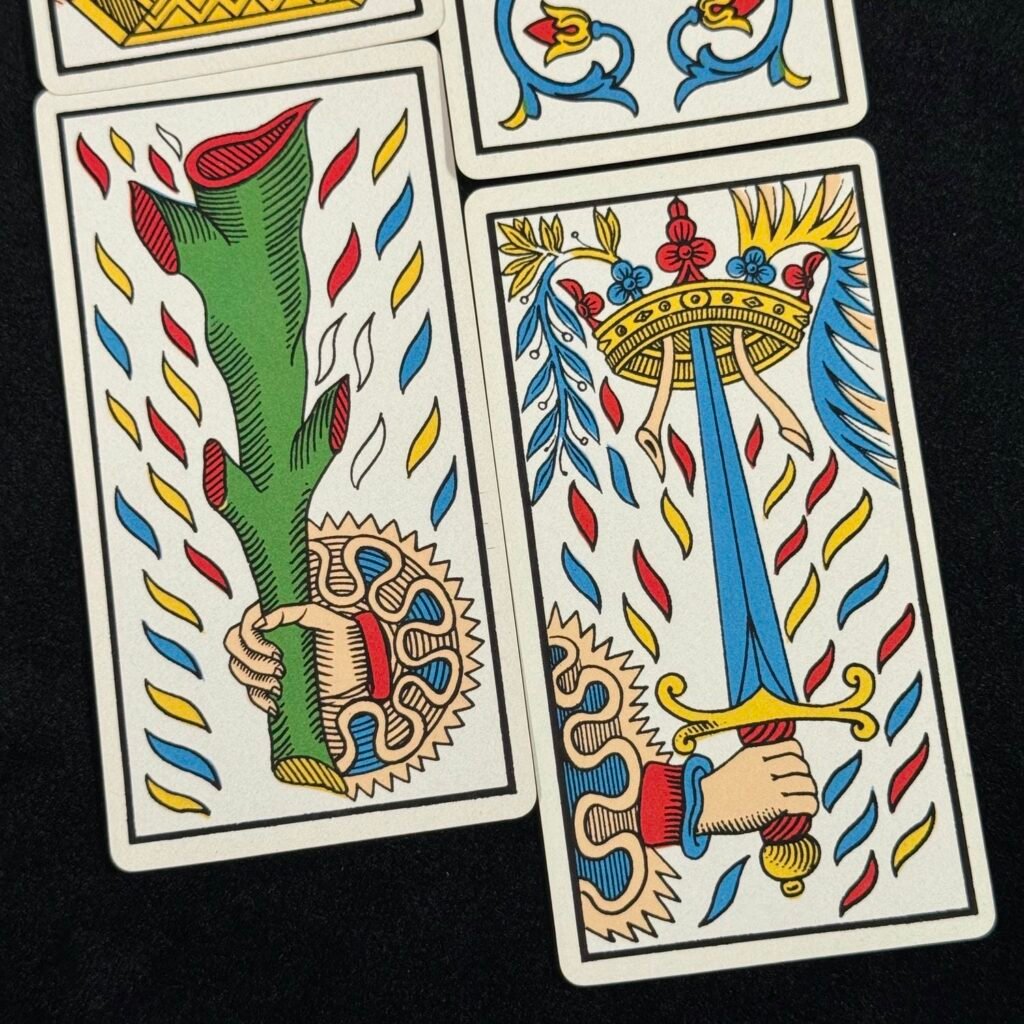
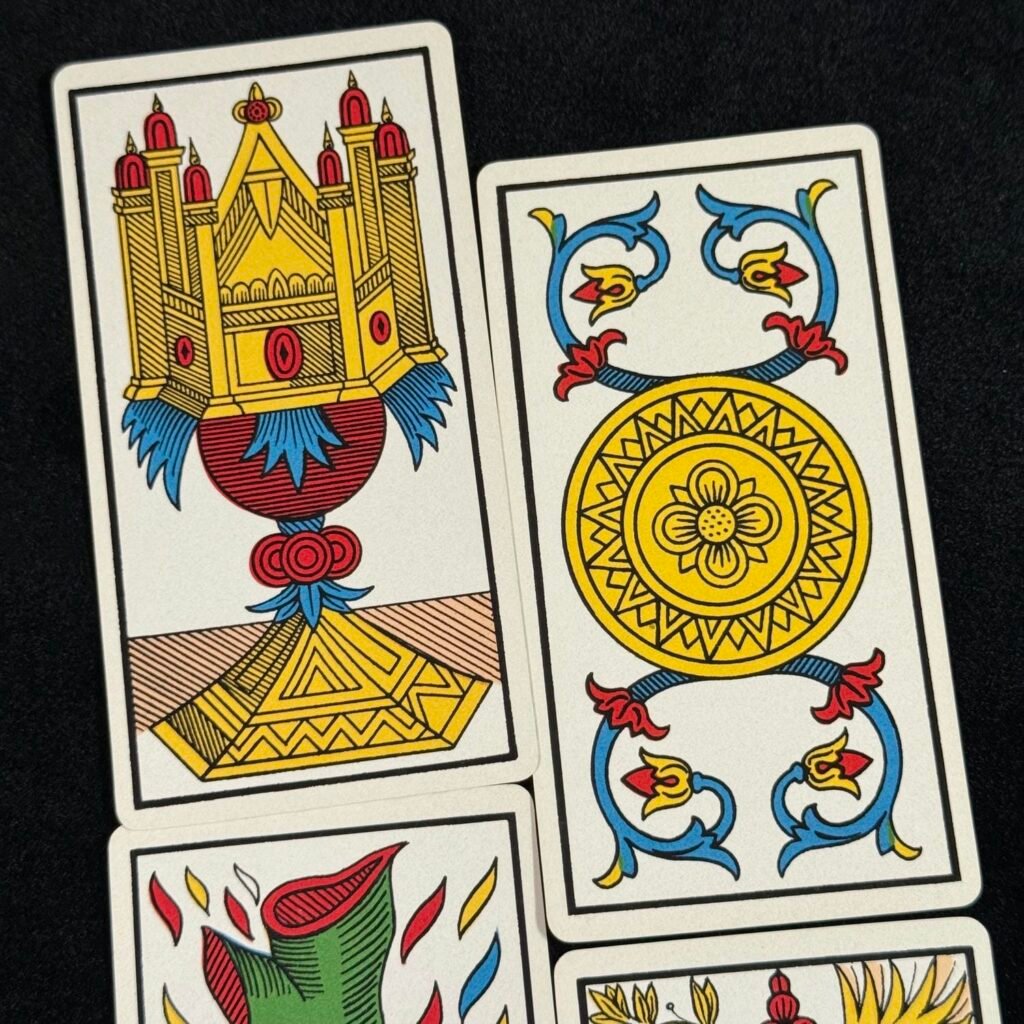
Gift card: includes two versions of the Coin 2 card, one with iris and one with tulips
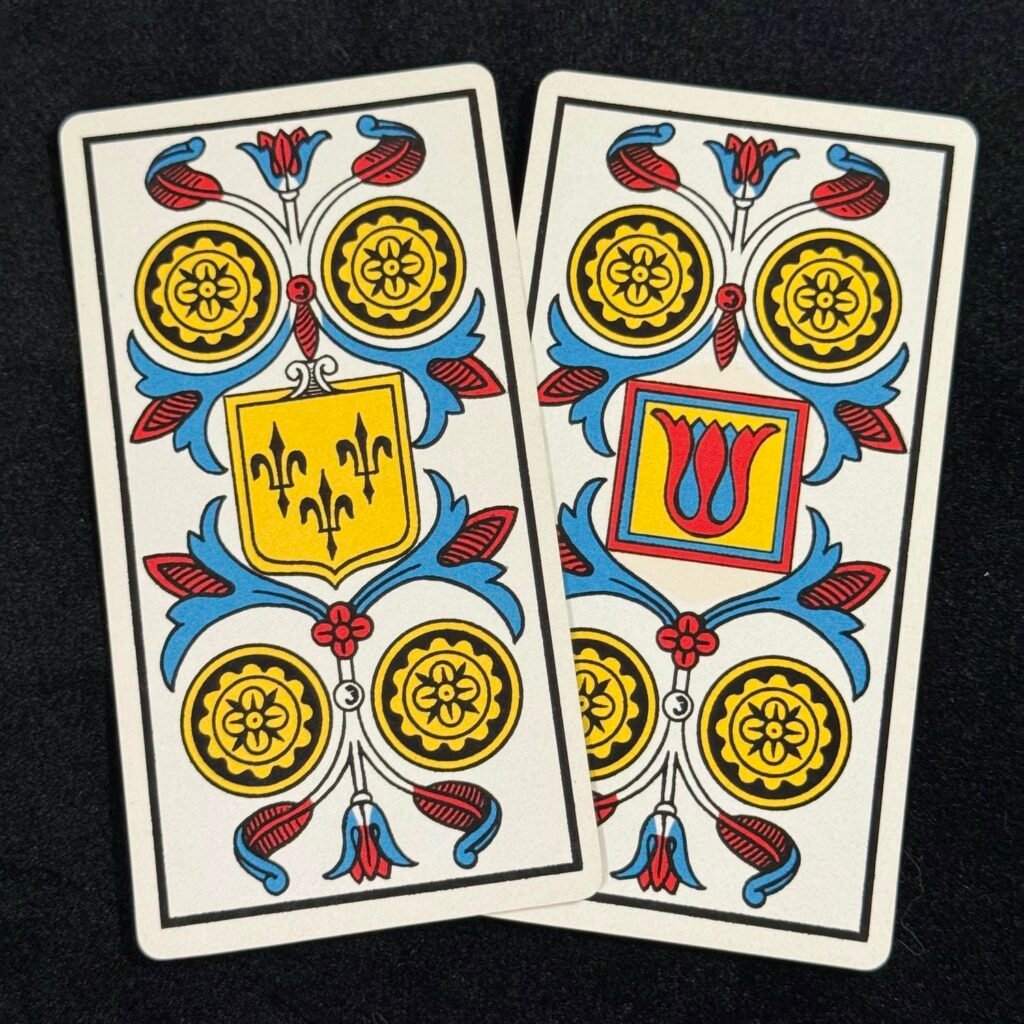
This work includes hundreds of improvements. For example,
Juggler: in 1930, a small blade of grass between the character’s legs with only one leaf. Here, based on the 1760 version, the prickly strong tip has been added.
Fool: In 1930, the two dots on the stick held by the Fool disappear. Re-added here based on 1760.
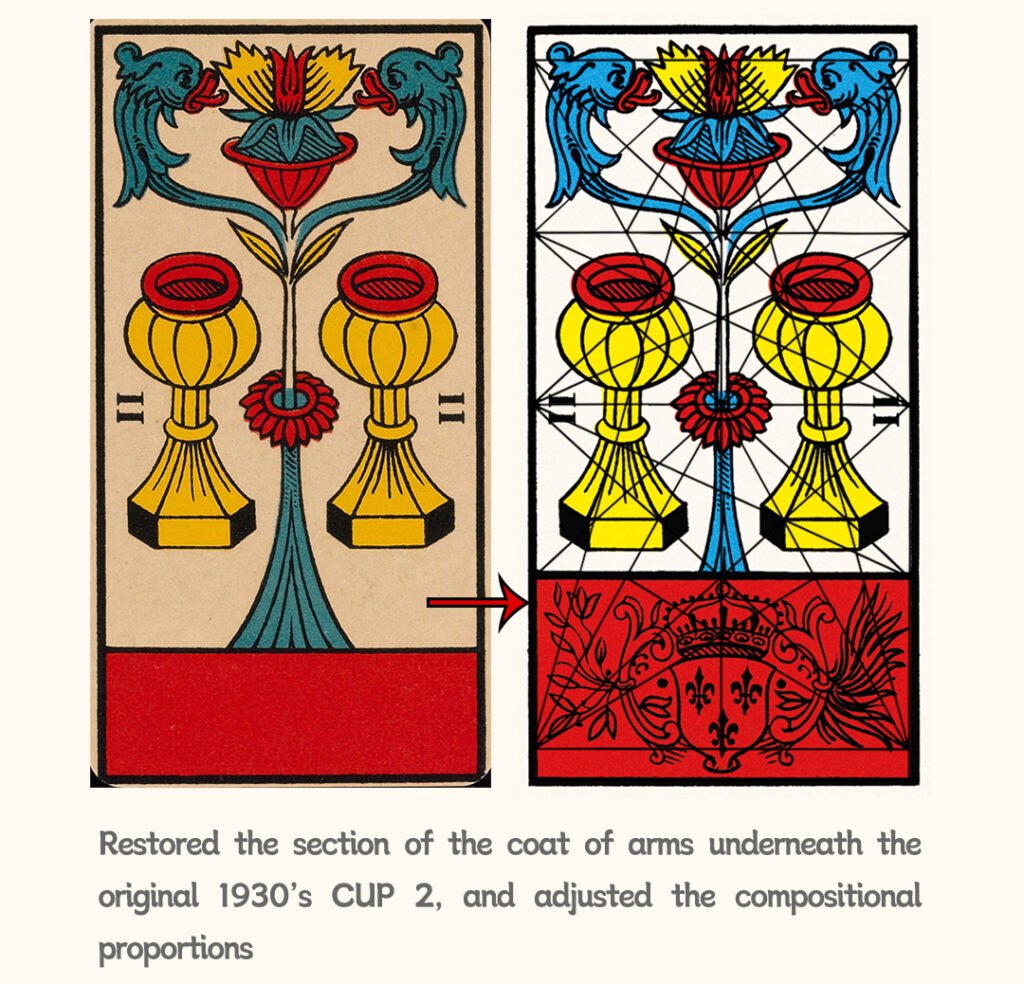
Justice: In 1930 the sword is yellow and blends in with the background making it difficult to distinguish. This has been changed to white in reference to 1760.
Diable: In 1930 the torches were blue and blended into the background making them difficult to distinguish,Change here based on 1760. In 1930, the genitals of the central character are ignored. Adjusted here from the 1760 .
Imperatrice: The necklace in 1930 is blue, indistinguishable from the colour of the dress; the scepter’s horizontal line, originally yellow, is also indistinguishable, and is here changed to yellow and red by reference to 1760.
Empereur: The sphere of the sceptre in 1930 is yellow, overlapping the colour of the Empress. Here reference 1760 is changed to the same colour as the Emperor’s beard, i.e. white, without destroying the overall harmony of the picture.
2 of Cups: Restored the section of the coat of arms underneath the original 1930’s Cup 2, and adjusted the compositional proportions.According to Chalai Unger’s Tarot Card Structure Chart

Lastly, Following a rigorous colour scheme. In reality, the original colours of the Tarot de Marseille, due to the production process, are not within the control of the engraver, and their original colours have become almost untraceable. The colours of this edition, originating from the late 1760 version (by Anthony Camoin), and the late 1930 version (by Paul Marteau), have a simple and rigorous colour palette that gives it interpretative significance. In addition, this edition optimises some of the colour blocks of the Devil, Lover, Empress and Emperor cards.


